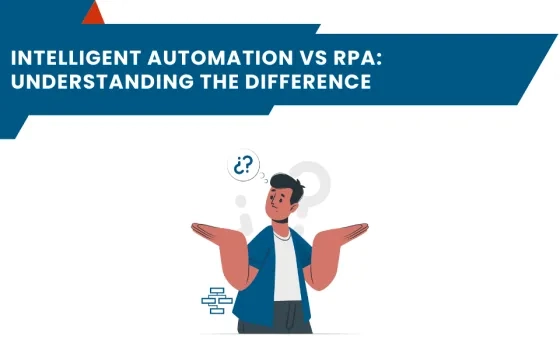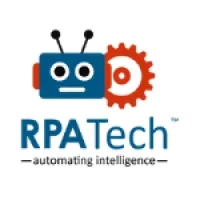Machine learning: a groundbreaking technology that’s not just reshaping our understanding of data but also redefining how we build and optimize software. From automating mundane tasks to predicting user needs with uncanny accuracy, machine learning is at the forefront of modern innovation. But what exactly does this mean for developers? In this blog post, we'll explore how integrating machine learning into the software development lifecycle can enhance efficiency, elevate user experiences, and unlock new possibilities—transforming ideas into reality in ways we never thought possible. Buckle up as we dive into the exciting intersection of coding and artificial intelligence!
Introduction to Machine Learning and Software Development
In our fast-paced digital world, software development is constantly evolving. At the heart of this transformation lies a powerful ally: machine learning. This innovative technology is not just a buzzword; it’s reshaping how developers create applications and solve complex problems. Imagine software that learns from user interactions and adapts over time, providing personalized experiences like never before. That's the promise of machine learning in modern software development. As businesses strive to stay ahead of the curve, understanding its role becomes crucial for anyone involved in tech. So what exactly is machine learning? How has it carved out its niche within software development? Let’s dive into this exciting intersection where algorithms meet creativity, driving advancements that could redefine our digital landscape.
Evolution of Machine Learning in Software Development
Machine learning has come a long way since its inception. Initially, it was limited to basic algorithms and simple data processing methods. Early adopters saw potential, but practical applications were scarce. As computational power grew, so did the sophistication of machine learning models. Algorithms evolved from linear regression to complex neural networks capable of deep learning. This transition allowed for more accurate predictions and insights. Today, machine learning is woven into the fabric of software development. It plays a pivotal role in automating tasks and enhancing user experiences. Developers now leverage frameworks like TensorFlow and PyTorch to create robust applications faster than ever before. Moreover, cloud computing has democratized access to powerful machine-learning tools. Smaller companies can harness advanced capabilities that once required significant resources or expertise, leveling the playing field in software innovation.
Benefits of Incorporating Machine Learning in Software Development
Machine learning (ML) is a rapidly growing field that has revolutionized various industries, including software development. Incorporating machine learning in software development offers numerous benefits that can enhance the efficiency and effectiveness of the entire process. 1. Faster and More Accurate Decision Making: One of the major advantages of incorporating machine learning in software development is its ability to analyze vast amounts of data at incredible speeds. This allows developers to make faster and more accurate decisions based on real-time data, leading to improved productivity and reduced development time. 2. Automation of Repetitive Tasks: Machine learning algorithms can be trained to automate repetitive tasks in the software development process, such as code testing and bug detection. This saves valuable time for developers, allowing them to focus on more complex and critical tasks. 3. Improved Quality Assurance: By continuously analyzing data during the development process, machine learning algorithms can identify patterns that may lead to potential errors or bugs in the code. This enables developers to detect and fix these issues before they become major problems, resulting in higher quality software products. 4. Personalization of User Experience: Incorporating machine learning in software development allows for a more personalized user experience by using collected data from previous interactions with the product. ML algorithms can learn user preferences and behavior patterns, providing customized recommendations and suggestions tailored to each individual user. 5. Cost Savings: Integrating machine learning into software development also offers cost-saving benefits for businesses. With automated processes and improved decision-making capabilities, companies can reduce their operational costs while still maintaining high-quality standards. 6. Scalability: Machine learning algorithms are designed to handle large volumes of data without compromising performance or accuracy. As a result, incorporating ML technology into software development allows for greater scalability as applications grow and evolve over time without any decrease in efficiency or functionality. 7. Competitive Advantage: The adoption of machine learning technology within software development provides organizations with a competitive advantage over their competitors who may not be utilizing ML. With faster development cycles, improved quality assurance, and personalized user experiences, businesses can stay ahead of the curve and meet the ever-changing demands of their customers. Incorporating machine learning in software development has numerous benefits that enhance the entire process from start to finish. From faster decision-making to cost savings and a competitive advantage, it is clear that ML technology plays a crucial role in modern software development.
Common Applications of Machine Learning in Software Development
Machine learning is making waves in software development, influencing various aspects of the industry. One prominent application is predictive analytics. By analyzing historical data, systems can forecast future trends or user behaviors. This capability helps developers create more responsive applications. Another key area is natural language processing (NLP). Developers are leveraging NLP to enhance chatbots and virtual assistants. These tools improve customer interactions by understanding and responding to human language more effectively. Furthermore, machine learning aids in code optimization. Algorithms analyze existing codebases to identify redundancies or inefficiencies, helping developers streamline their projects. Lastly, automated testing has benefited from machine learning models that predict potential failure points in a system before they occur. This proactive approach reduces downtime and enhances overall software quality, leading to smoother deployments and happier users.
Challenges Faced when Integrating Machine Learning into Software Development
Integrating machine learning into software development is not without its hurdles. One significant challenge lies in data quality. Machine learning algorithms thrive on clean, accurate data. Incomplete or noisy datasets can lead to misleading outcomes. Another issue is the skill gap within teams. Not every developer possesses expertise in machine learning techniques. This knowledge shortfall can slow down projects and lead to suboptimal implementations. Additionally, maintaining transparency poses a problem. Many machine learning models operate as "black boxes." Understanding how these models arrive at decisions becomes complex, making debugging difficult. Lastly, there's the question of scalability. A solution that works well for small datasets may struggle with larger workloads, necessitating constant adjustments and optimizations throughout the software's lifecycle.
Best Practices for Successful Implementation of Machine Learning in Software Development
To successfully implement machine learning in modern software development, start by clearly defining your objectives. Understanding what you want to achieve will guide your entire project. Data quality is paramount. Invest time in collecting and cleaning data before feeding it into algorithms. Inaccurate or biased data can lead to flawed models. Collaboration between teams is essential. Encourage communication among developers, data scientists, and domain experts. This ensures a shared understanding of goals and enhances the model's effectiveness. Choose the right tools and frameworks for your specific needs. With numerous options available, selecting appropriate technologies can significantly streamline your workflow. Regularly monitor model performance post-deployment. Machine learning models may drift over time; continuous evaluation helps maintain accuracy while adapting to changing datasets or user behaviors. Finally, embrace an iterative approach to development. Experiment with various techniques and be open to refining models based on real-world feedback and results.
Future Outlook: How Will Machine Learning Continue to Transform Software Development?
The future of machine learning in software development is filled with exciting possibilities. As algorithms become more sophisticated, the ability to analyze vast amounts of data will enhance predictive capabilities. This means developers can create smarter applications that anticipate user needs. Automation will also play a crucial role. Machine learning can streamline processes like testing and deployment, reducing human error and speeding up production cycles. With this efficiency, teams can focus on innovation rather than repetitive tasks. Moreover, as cloud computing evolves, integrating machine learning into software solutions will become even easier. Developers will have access to powerful tools without needing extensive resources. Collaboration between humans and intelligent systems is set to redefine roles within development teams. The synergy could lead to groundbreaking applications that we are only beginning to imagine today. As these advancements unfold, the landscape of software development may shift dramatically toward a more adaptive and responsive model.
Conclusion
Machine learning is undeniably shaping the landscape of modern software development. Its ability to analyze vast amounts of data, learn from it, and make predictions opens up new possibilities for developers. As machine learning techniques continue to evolve and become more accessible, they are set to revolutionize how we approach software design and functionality. The integration of machine learning brings numerous benefits, including improved efficiency, enhanced user experiences, and innovative features that were previously unimaginable. However, challenges still exist. Developers must navigate issues like data quality and algorithm bias while ensuring seamless integration into existing systems.






























